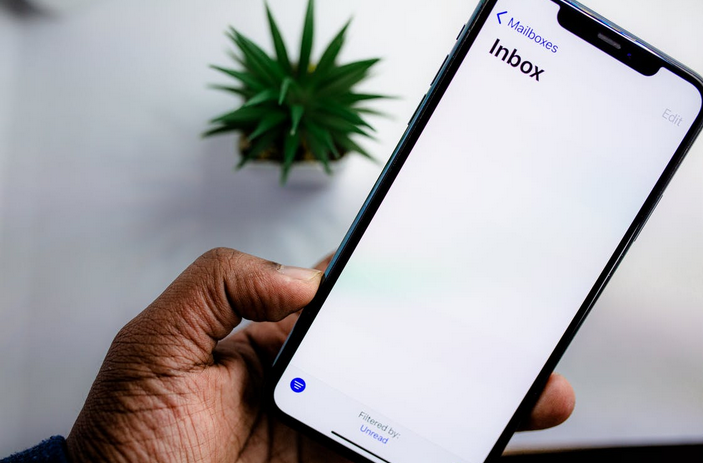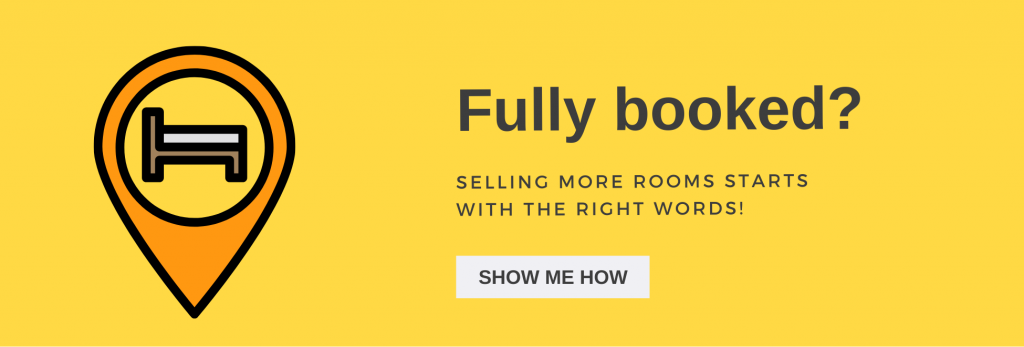More clicks, more engagement, more action—that’s what you want out of your hotel emails.

Here’s why email marketing should be part of your hotel’s marketing strategy
When it comes to marketing small hotels, we spend a lot of time discussing the best distribution channels, how to increase direct bookings, the importance of storytelling, stages of the travel purchase journey (and what that means for you) as well as how to convince people to leave reviews. But there’s considerably less information out there on building the best hotel email campaigns—from start to finish.
That’s a shame because for every $1 spent on email marketing, it’s been proven that you can get a return of $45 to $51. And that’s not the only benefit!
Keep reading for a deep dive into the main advantages of sending hotel emails.

Everyone has email but not everyone’s hanging out on social.
Question: If you put all your resources into social media marketing, how do you connect with those that aren’t on Instagram, Twitter or Facebook?
Answer: You land in their inbox—with their permission of course.
Hotel emails are such a powerful marketing channel because it allows you to communicate directly and rather personally with qualified leads. These are people who actually want to hear from you—they are your former and future guests—and most likely to eventually take action.
Constant contact cultivates long-term relationships.
It’s true of our social lives and true to great marketing: Regular communication helps you nurture relationships—whether that’s with someone who has already stayed with you or someone who’s still thinking about it. Because when you keep in touch, your brand stays fresh and top of mind. So, when the time comes to make a booking, chances are they’ll remember you.

Keeping in touch helps you win prospects’ trust.
It’s not easy to earn someone’s trust. It takes time and it’s hard work. That’s where hotel emails are an asset. When readers value, appreciate and anticipate what you’re sending them, they can’t help but like you—and give you their buy-in. Keep in mind that any old email won’t do; you need to give subscribers something worthy of their time.
Emails are a practical way to elevate engagement.
Desirable content, i.e. content readers enjoy, is a great way to boost interaction and participation. An attractive offer drives clicks to your landing page. An interesting article encourages click-throughs to your hotel blog. Useful information gets forwarded to family and friends. In other words, your hotel’s emails are an organic way to increase engagement with your brand. Who doesn’t want that?
Hospitality email marketing increases direct bookings.
If you want more direct bookings, you need to ask for it. But you must also make it easy to book direct. Your emails are the perfect avenue for that. Fantastic offers and can’t-miss promotions link to your landing pages—not online travel agencies. Once on your site, readers can book direct via your booking engine.
You can get to know your audience even better.
There’s a lot you can learn about your subscribers from the preferences indicated at the time of sign-up to the types of messages they open and even the links they click on. In other words, you can get a better picture of what past and future guests want based on their behavior and then use that insight to create better, highly-targeted campaigns.
Five steps for creating hotel email campaigns that get more clicks

#1: Proactively build your hotel’s email list
Before you can start a hotel newsletter or send out marketing and promotional email campaigns, you need an email list. That is, a list of people who opted-in to receive your messages.
How do you do that?
Add an opt-in form to your website. Whether it’s at the top of the page, in the footer section, at the side, or a dedicated sign-up page, make sure it’s easy to spot!

Get to know their interests. Use the sign-up process to get to know your subscribers. Why are they signing up? What kind of topics are they interested in? Now’s your chance to ask.
Keep it simple. While you want to get some additional information from subscribers, you don’t want an opt-in process that’s too complex. You also don’t want to make people jump through hoops just to unsubscribe. So, make it quick and convenient.
Make subscribing worth their while. Tell them why it’s worth opting in for your hotel’s emails. Use language that makes them feel special and excited. For example:
- Unlock VIP benefits
- Access subscriber-only deals
- Be the first in line for our BEST offers

Maintain good list hygiene. All this means is make it a point to manage your list. Confirm email sign-ups, seek to re-engage or actively clear out inactive subscribers, remove addresses that bounce, and delete invalid email addresses.
#2: Analyze the data
There’s so much you can learn about your subscribers just by making note of their preferences and observing their behavior. Of course, you’ll have to put in the work of analyzing your data.
- Check their interests. When they signed up, did they indicate any interests? For example: Did they say they’d rather receive messages related to culture and events? Dining and culinary happenings? Hotel news? Offers and promotions?
- Consider their actions. Which of your emails did they open? Which emails were ignored? What links did they click on?
- Look at their booking history. What type of room did they book? Did they avail of any other services e.g. airport transfer, spa session? Did they include any comments or make requests when booking?
Compile that information and you get valuable insight you can use to improve the quality of subsequent hotel emails. Because once you know someone’s habits and preferences, it’s so much easier to send targeted mails—and get the recipient to take action.
#3: Segment your guests
It’s really important to segment your guests. Consider two individuals: Jen’s a solo female traveler, Adam’s a middle-aged business traveler who only ever comes to town for work. Sending Adam an email with information on an upcoming music festival isn’t going to interest him—but it might be straight up Jen’s alley!
Solo female travelers, families, friends, backpackers, business travelers, seniors – they’ve all got different needs and interests. You want to send subscribers emails that matter to them: Content that is relevant, useful and of value.

What are the different ways to segment your guests?
It’s up to you to find the segmentation that works best for your marketing. Of course, it will partially depend on the information you have. Here are a few approaches:
- Demographics: Age, gender, marital status, income
- Purchase behavior: Room type, product / service add-ons, length of stay or time of year they tend to stay with you
- Preferences: Whatever they selected as their interests when they subscribed
- Geography: Region, country
- Travel purpose: Business or leisure
#4: Write attention-grabbing subject lines
Let’s be clear: Stay away from click-bait and don’t go for gimmicky. You want attractive subject lines that reflect the content of your hotel emails. In other words, it should give readers an indication what your email is actually about.
For example:
- The sweetest Club Room deals for Valentine’s day
- Treat yourself for less with these spa deals
- Hurry – our Summer Sale is ending soon
- Recreate our signature Panettone this Christmas
- Secrets from our award-winning kitchen
- Join us for this year’s hanami season
The content of your marketing emails can be:
- Seasonal
- Holiday-related
- Time-sensitive, e.g. deals or last minute availability
- Hotel news and updates
- Designed for re-engagement
- Hotel newsletter content e.g. recipes from your chef, profiles of the local artisans whose works you have around the hotel, the farms you source premium ingredients from and so on
#5: Test and adjust your hotel emails
As with everything else in life, the best results come from consistent, hard work but also trial and error. Put another way: Part of building successful campaigns involves testing (e.g. A/B testing) and adjusting your hotel emails.
You can test design elements, headers and images as well as subject lines, calls to action, content and even the tone (word choice, syntax, punctuation etc.) you use.
So there we have it! The five steps you need to get the best results out of every email campaign.
Running out of ideas?
Don’t have time for hotel email copywriting? Get in touch – I’d love to help!